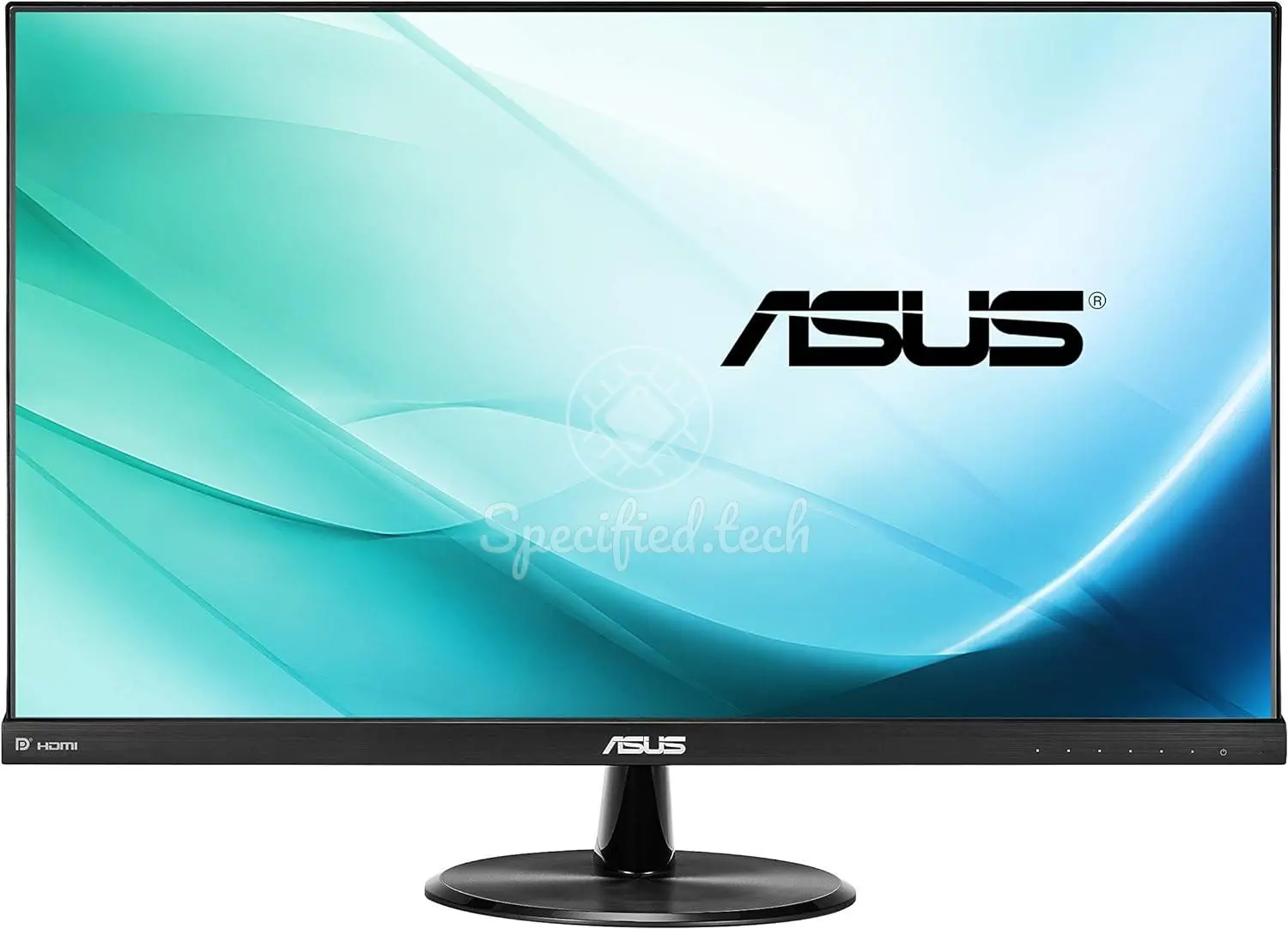
Today we will look at the monitor VP279Q from Asus from the year 2015. Within this article, we will first take a closer look at the most important feature of a monitor -the display-, then the design, and in the next section we will go into the features of the monitor. Of course, power consumption, certifications, connectivity and other important details will also be considered.
Display
According to the manufacturer, the display measures 27 inches ( 68.5 cm on the diagonal). While classic CRT monitors were built with a screen ratio of 4:3, this monitor has a ratio of 1.778 : 1 (width to height). In addition to the aspect ratios and the specified screen diagonal, the ratio between the monitor surface and the actual display could also be important for some enthusiasts. This ratio describes the general relationship between the non-display area and the display. In other words, approximately 86.6 % of the front surface of the monitor consists of the display, while the remaining percent consists of screen edges and does not enable image reproduction. When setting up several monitors next to each other, it is advisable to prefer models with the narrowest possible edges. The display is a AH panel. The panel has a resolution of 1920 x 1080 px. The pixel density is 81 ppi. The pixel pitch is 0.311 mm. The panel is illuminated by W-LED.
Color representation
The panel has a bit depth of 8 per color channel, but what does that mean? The number of bits determines how many colors can be encoded for the individual pixels of the display. For an 8-bit panel, for example, this is 256 different colors (2^8 = 256). However, since we usually display three different colors per pixel at the same time, in theory about 16 million (256^3) different colors are possible by mixing the three pixels. A 10-bit panel could even display a billion colors. According to the manufacturer, the coverage of the NTSC 1953 color space is 72 %. According to the manufacturer, the coverage of the SRGB color space is 91 %.
Contrast ratio
Contrast ratio is a common measurement used to represent the maximum relative differences in brightness between black and white. It describes the ability of a screen or projector to produce a high-contrast image and is the quotient of the maximum and minimum displayable luminance. The higher the values are away from each other, the stronger the quantitatively seen difference between black and white is set up, which in turn results in an improved image quality.
HDR
The monitor supports all HDR modes listed here:
screen design
Ports
The monitor can be connected via 1 VGA ports. There are 1 HDMI ports on the monitor.
Features
- The display/monitor supports Frame Rate Compensation.
Panel manufacturer
Many manufacturers of monitors and TVs fall back on third-party manufacturers, such as Samsung or LG, when choosing the actual display (panel). Thus, many of the monitors have the same panel and, conversely, differ only in their design, additional functionalities, the software used and, of course, the price. Two monitors from Asus or another manufacturer with an identical panel do not necessarily have to have the same picture quality, but it is usually a first indicator for a purchase decision. The panel used here is originally from LG Display and has the model number LM270WF5-SLC1.
Further information
- 1.2

